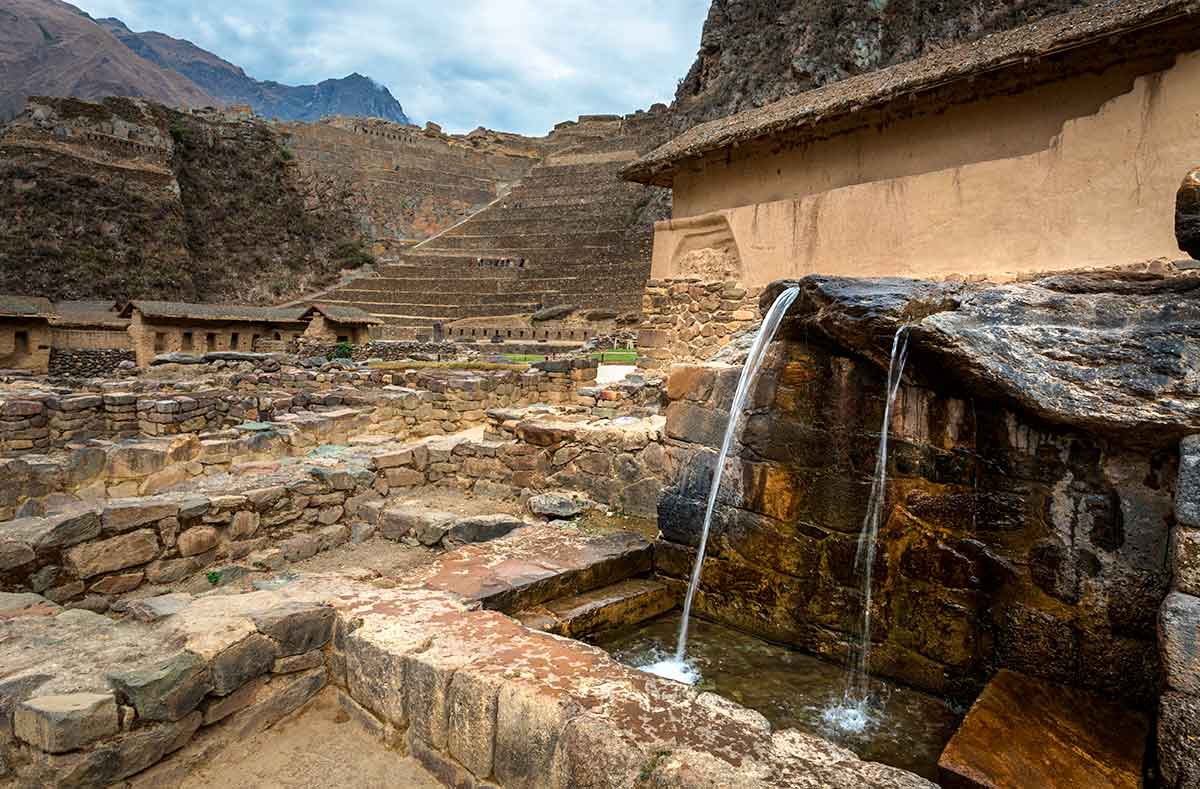Hello bloggers, today we are going to talk, write about Ollantaytambo village and the archaeology sites there. Read more in the blog below.
Welcome to Ollantaytambo:


Surrounded by two huge Inca ruins, the picturesque village of Ollantaytambo, also known as Ollanta, is a great living example of Inca architecture in Cusco, Peru. With its narrow cobbled streets, the city has been populated since the 13th century.
Ollantaytambo is a charming and welcoming place to visit, and It’s great to walk through its narrow streets like labyrinths, passing by stone houses in the middle of its water channels, giving the impression that you’ve gone back in time. This small town also offers access to excellent hiking and biking trails.
Archaeology sites of Ollantaytambo:
These spectacular ruins, their Inca fortress and temple, rise around the mountains of Ollantaytambo, making for an unforgettable afternoon outing.
You will need to buy the BTG ticket general tourist ticket, valid for 10 days, including 16 more tours throughout the region.
The extensive and steep terraces that protect the Inca archaeological sites of Ollantaytambo mark one of the few places where the Spanish conquerors lost the great battle and that what the Spanish Conquers never found MachuPicchu citadel.
The conquerors were greeted with arrows, spears and stones from the top of the steep terraces, preventing access to the fortress, and In a brilliant move, Manco Inca plunged into the middle of the fortress through previously prepared channels.
With the Spanish horses deep in the swamps, Pizarro ordered a swift retreat and was pursued by thousands of victorious soldiers under the command of Manco Inca.
However, the Inca victory was short-lived, and the Spanish armed forces soon returned with four times as much cavalry as before and even so, Manco managed to escape to his jungle stronghold in Vilcabamba.


Although Ollantaytambo was a very protected fortress, it also served as a temple. An intricately detailed ceremonial center is located at the top of the terraces.
Some extremely well-designed walls were being built at the time of the conquest and were never completed. The stone had been extracted from the Inca quarry on a mountain 6 km away, high above the opposite bank of the Urubamba River.
At the time of the Spanish invasion and conquest of Peru, Ollantaytambo served as the last stronghold for the Inca Manco Yupanqui, who was the leader of the Inca resistance at the time. Today, the ruins and town of Ollantaytambo are an important and well-known tourist attraction in the Sacred Valley.
Its main attraction is the Fortress of Ollantaytambo, surrounding the city, in a part known as Temple Hill. It is also a very touristy spot, as many travelers take the train to Aguas Calientes from there.
Ticket archaeological Ollanta:
To access the archaeological site of Ollantaytambo you will need the Partial Tourist Ticket -BTP or General Tourist Ticket – BTG. The partial ticket or the complete ticket can be bought in Cusco, or we can buy for you.In addition, Ollantaytambo is also the most used starting point for the famous Inca Trail 4 days.


History of the ruins of Ollantaytambo:
In the 15th century, the Inca Pachacutec conquered and began the reconstruction of the city of Ollantaytambo, with terraces for agriculture and an irrigation system, these huge terraces make up what is called Fortress or Inca Temple.
The city became home to the Inca nobility and after the death of the Inca Pachacutec, the city and its surroundings were inherited by his family and finally inherited by Manco Inca. Ollantaytambo was originally built for religious purposes, but Manco Inca used it as a fortress, being the site of a great battle, one of the few successful battles against the Spanish conquerors.
As you climb the Inca stairs to the top of the fortress of the Ollantaytambo ruins, you begin to understand the size of this structure. The terraces are taller than the common man and much wider than they appear from a distance. At the top of the fortress is the military area.
It is here that Inca Manco and his soldiers observe the Spanish invaders. This was an excellent strategic point, and only when you get to the top do you realize its height and the panoramic view of the Sacred Valley. Near the top of the fortress, you will be able to enter the temple complex.
This part has many stone pieces worked in detail, like the Enclosure of the Ten Niches. This incomplete temple contains the Wall of Six Monoliths and Each of these stones weighs 50 tonnes and were brought from a quarry near this site.
The temple of the sun was like a calendar for the Incas and its purpose was specifically for the date 21 June when the winter solstice occurs and 21 December for the summer solstice. Guides often carry posters or folders with photos.


These photos show the functions of the Temple of the Sun, the solar sphere and other features that the Incas used at the time. If the construction of the Temple of the Sun at Ollantaytambo had been completed, it would have been a spectacular structure.
To this day it is not known why its construction was not finalised. It is most likely due to abandonment by the attacks suffered. The ruins of Ollantaytambo have many beautifully built structures. As you move away from the Temple of the Sun, the road heads towards BalconPata, which is a narrow path leading to two large structures for exploration and other terraces.
From there you start descending towards the ceremonial part at the base of the fortress. You will enter an area full of small pools and fountains that serve as an irrigation system and as a religious centre. The princess pool, or Baño de la Ñusta is one of the most beautiful pools built inside the granite.
This fountain has some examples of Inca sculpture and carved stonework. The Patakancha River is what feeds the fountains of this From the terraces that can be seen on the left-hand side, from there you can see the ruins of the ancient markets built by the Incas.
These were known as qollqa and were used by the Incas as a food warehouse to supply the entire city. This warehouse had narrow windows that made it easy to handle the food grown. If you look closely, you will see a face carved into the rock. This is the face of Wiracocha or, the deity Tunupa.
The Incas believed that he was the great creator of everything. He was represented with a pointed object on his head (Maikaspacha) and carried heavy sacks on his back. It is possible to walk to the market and the structure that represents the face of Wiracocha.
It’s a steep, vertical climb that can leave you tired and out of breath. When you get there, you will have a panoramic view of the whole city and the mountain next to it with Temple Hill.
Contact Us:
For more information, please contact us DREAMY TOURS, we will be happy to answer all your questions about Peru, Bolivia and Chile.
We are a Travel Agency specialized in tours, packages, if you need some information, please write to us.
We offer tours, excursions – Peru – Bolivia – Chile:










